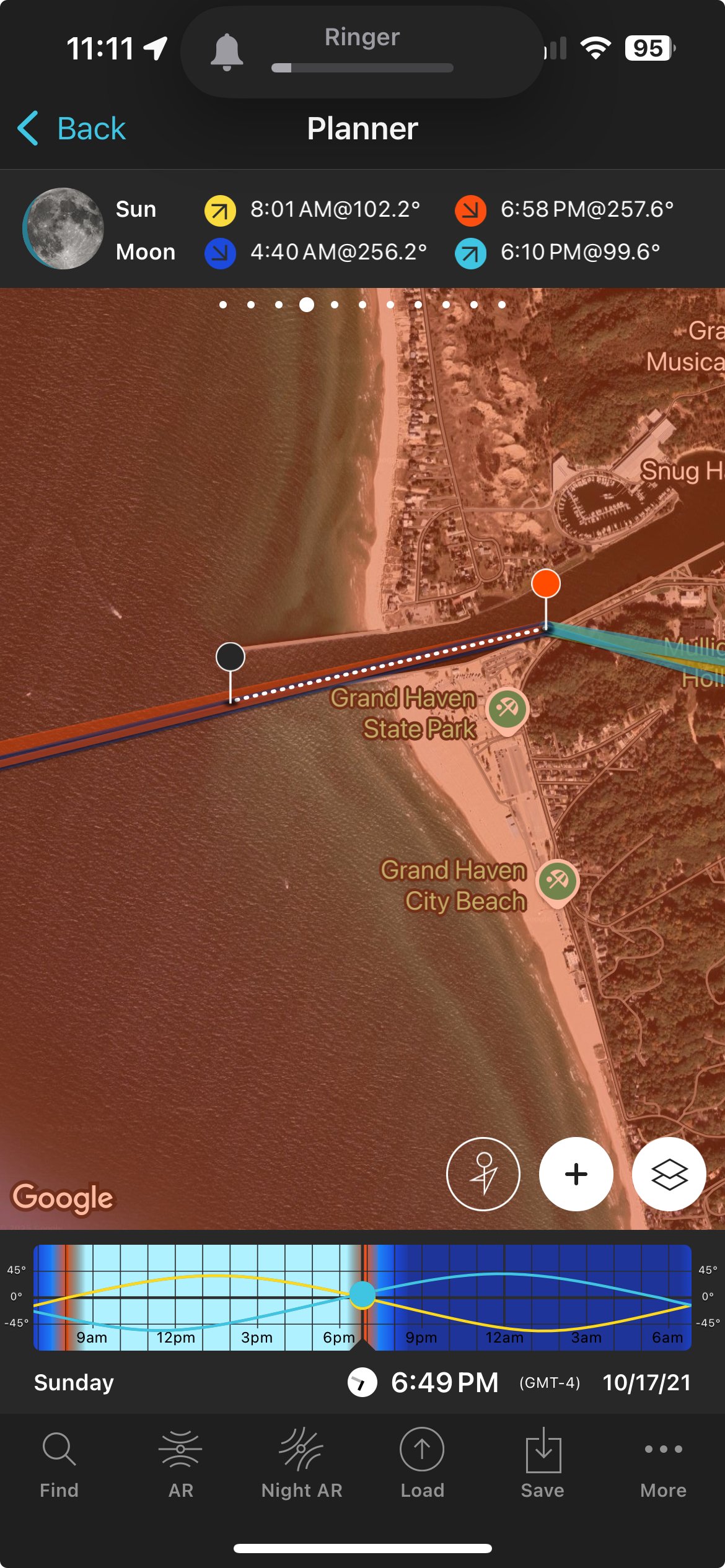
Let’s Celebrate the Sun
My photography is focused on the beauty found between sundown and sunrise. Capturing sunsets and sunrises can be both magical and technically challenging for two main reasons:
1. You’re often shooting directly into the sun.
2. The dynamic range—the difference between the brightest and darkest parts of the scene—is extreme.
A simple direct sunset picture captures the sun’s reflection on the water and leads to the glow in the sand dune. Keeping some foreground elements and keeping the horizon towards the top of the image, gives the picture a lead in and depth.
In order to get both the sun, sky, and the foreground properly exposed, this image was bracketed. Three to five photos are taken, with the camera on a tripod, at different shutter speeds to allow for each section to be properly exposed, while under or over exposing the rest. Fortunately, my camera does this with a simple setting. The photos are blended in editing for the final image. This is a simple process in Lightroom. A little bit more post processing yields the picture at the left.
There are a lot of compositional elements to this photo. Leading lines, layers, and triangles. Selecting where the horizon goes is always important. Rarely does it belong in the middle, often, unless the sky is the subject, it belongs in the top third of the picture. Notice the slight sun star around the sun as a result of a closed down aperture (F22).
There is an App called PhotoPills that will show where the sun, the moon and the Milky Way will be in the sky at any time or date. It will also show the alignment of any of these celestial subjects with any terrestrial subjects.
Additionally, there is an app called “Sunsethue” which predicts the intensity of the sunset. It is good directional information, but like all predictors, is never perfect
The red pin is the shooting location, the dark red line is the line of the setting sun and the black pin is on the Grand Haven Lighthouse. Using a 300mm lens makes the sun appear larger. This is a single shot. Since the water is very dark and uninteresting and the sky has a really beautiful colour, the horizon line was pushed to the bottom third.
Sometimes the effects of the setting sun and the low light source become the subject. Still chasing the elusive sun glowing through the waves, this image shows off the beauty of the waves crashing on the rocks with the very low direction of the light. Shooting in burst mode allows for selection of the perfect timing as the splash reflects the setting sun. Choosing a faster shutter speed shows the details of the water splash.
All pictures were taken with a Nikon Z8. Other than the Lighthouse picture above, 24-70 was the lens. This lens is my go to lens for most landscapes, sunsets, etc. The Lighthouse picture was taken at 300 mm using a 200-500mm lens.
As noted in the Newsletter, let me know if this was interesting, too complicated, not detailed enough, or “other”.
Join my Facebook page for more photos between sunset and sunrise.











